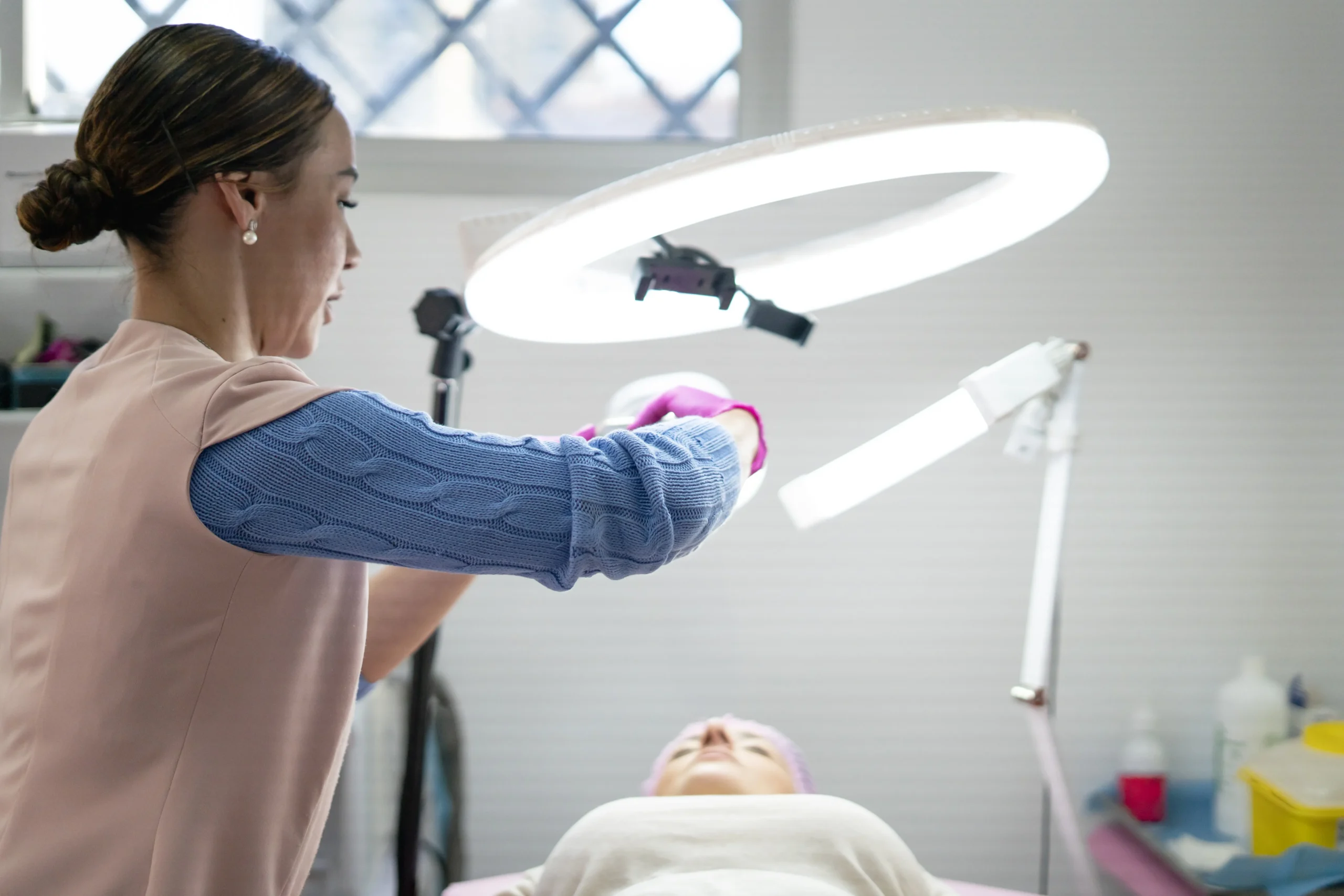The 5 Laser Parameters Every Aesthetic Professional Must Master
Every successful laser treatment depends on how well you control five settings: wavelength, fluence, pulse duration, spot size, and repetition rate. These parameters determine how energy behaves in tissue, how deep it travels, and how safely it delivers results. When you understand them, you stop relying on presets and start working with confidence.
As a Certified Medical Laser Safety Officer and ANSI Z136.3–aligned educator, I focus on practical application. My live course and online course show practitioners how to control every pulse with precision and safety.
Why Understanding Parameters Matters
Each pulse of light creates a physical reaction inside tissue. Whether that reaction helps or harms depends entirely on how those five parameters are set. Misaligned settings can cause burns, post-inflammatory hyperpigmentation, or wasted treatments. Proper control turns guesswork into measurable outcomes.
- Wavelength defines which target absorbs light.
- Fluence determines how much energy reaches the tissue.
- Pulse duration controls how fast heat builds and dissipates.
- Spot size affects penetration depth and coverage.
- Repetition rate balances speed and safety.
When these parameters are calibrated together, you maintain control, reduce side effects, and build patient trust through predictable results.
1. Wavelength: Choosing the Right Target
Wavelength, measured in nanometers (nm), determines which chromophore absorbs the laser energy. In aesthetic medicine, the main chromophores are melanin, hemoglobin, and water.
Melanin absorbs shorter wavelengths such as 755 nm, making Alexandrite systems ideal for light-skinned patients with dark hair. Hemoglobin responds best to mid-range wavelengths like 532 nm or 585 nm, used for vascular lesions. Water absorbs longer wavelengths above 1,400 nm, making them essential in resurfacing or ablative procedures.
According to research available on ResearchGate, wavelength selection determines both penetration depth and chromophore specificity. The wrong wavelength may bypass the target or overheat non-target tissue, so understanding this principle is fundamental to safe practice.
2. Fluence: The Energy Dose
Fluence, expressed in joules per square centimeter (J/cm²), is the amount of energy delivered per area. It functions as the dose that decides whether a treatment succeeds or fails. Too little energy and the target remains unchanged. Too much and you risk burning the skin or causing pigment changes.
The correct fluence sits within a therapeutic window—high enough to reach threshold damage, low enough to protect surrounding tissue. This range shifts depending on wavelength, spot size, and skin type. In structured training, you learn to calculate fluence rather than rely on presets, ensuring reproducible outcomes across devices.
3. Pulse Duration: Timing the Heat
Pulse duration, or pulse width, defines how long energy is delivered. The target’s thermal relaxation time (TRT) is the key. TRT is the time it takes for a heated target to lose half its heat. To treat effectively, pulse duration should be equal to or shorter than TRT. Shorter pulses confine heat to small targets like pigment or tattoo ink, while longer pulses suit larger structures such as vessels or follicles.
Matching pulse duration to TRT ensures selective photothermolysis—the ability to destroy the target without harming surrounding tissue. During both live and online training, we use case studies to illustrate how a small change in pulse width can transform an endpoint from safe to unsafe.
4. Spot Size: Depth and Coverage
Spot size controls the diameter of the laser beam at the skin surface. A larger spot penetrates deeper because less light scatters sideways. Smaller spots increase precision but limit depth. Choosing the correct size depends on the target’s location and size.
- Use large spots (15–18 mm) for broad areas and deeper targets.
- Use small spots (6–10 mm) for detail work or shallow targets.
Each time you change spot size, adjust fluence. Larger spots may need less energy to reach the same endpoint, while smaller spots often require a slight increase. This adjustment prevents over- or under-treatment and maintains comfort throughout the procedure.
5. Repetition Rate: Controlling Speed and Thermal Load
Repetition rate, measured in hertz (Hz), refers to how many pulses per second the laser emits. It affects both efficiency and safety. Faster rates can heat tissue cumulatively, a problem known as heat stacking. Slower rates allow cooling but increase treatment time. Balancing these factors keeps the session efficient without compromising safety.
- 1–2 Hz for small, precise areas.
- 3–5 Hz for medium coverage.
- 6–10 Hz for large fields with active cooling.
Monitoring tissue response between pulses helps you avoid unwanted heat build-up. You’ll learn this skill through guided observation and practice during training sessions.
Integrating Parameters into One Framework
Mastering laser settings is not about memorizing numbers. It’s about creating a structured thought process that works across every device and indication. The sequence is straightforward:
- Identify the target chromophore—melanin, hemoglobin, or water.
- Select wavelength based on that target and skin type.
- Match pulse duration to thermal relaxation time.
- Adjust spot size for desired penetration and field size.
- Set fluence within the therapeutic window.
- Choose repetition rate for comfort and speed.
- Apply cooling as needed to protect the epidermis.
Following this checklist brings consistency and safety to every session. It also provides clear documentation for compliance and patient records.
Training That Turns Theory into Skill
Knowledge is only useful when you can apply it. In the Live Course, practitioners work hands-on with multiple devices to see how parameter changes affect real tissue response. The Online Course mirrors that instruction through video demonstrations, parameter exercises, and clinical scenarios built from peer-reviewed research.
Both paths are designed to help you understand not only what settings to choose but why they matter. That understanding is what separates a technician from a clinician.
Common Questions
What are the five key laser parameters?
They are wavelength, fluence, pulse duration, spot size, and repetition rate. Each controls a specific aspect of how energy interacts with tissue.
Why do parameters need to be adjusted together?
Changing one setting affects the others. For example, increasing spot size without lowering fluence can raise energy delivery too high. A systematic approach keeps them balanced.
What is selective photothermolysis?
It is the process of targeting a specific structure with laser energy while sparing surrounding tissue. It depends on correctly aligning wavelength, pulse duration, and fluence.
Can I learn this online?
Yes. The Online Laser Course provides complete foundational education, while the Live Course includes practical experience with real devices.
Ready to Master Laser Parameters?
Precision begins with understanding. Whether you prefer guided, hands-on instruction or flexible online learning, both options teach the same proven methods used in clinical practice worldwide.

